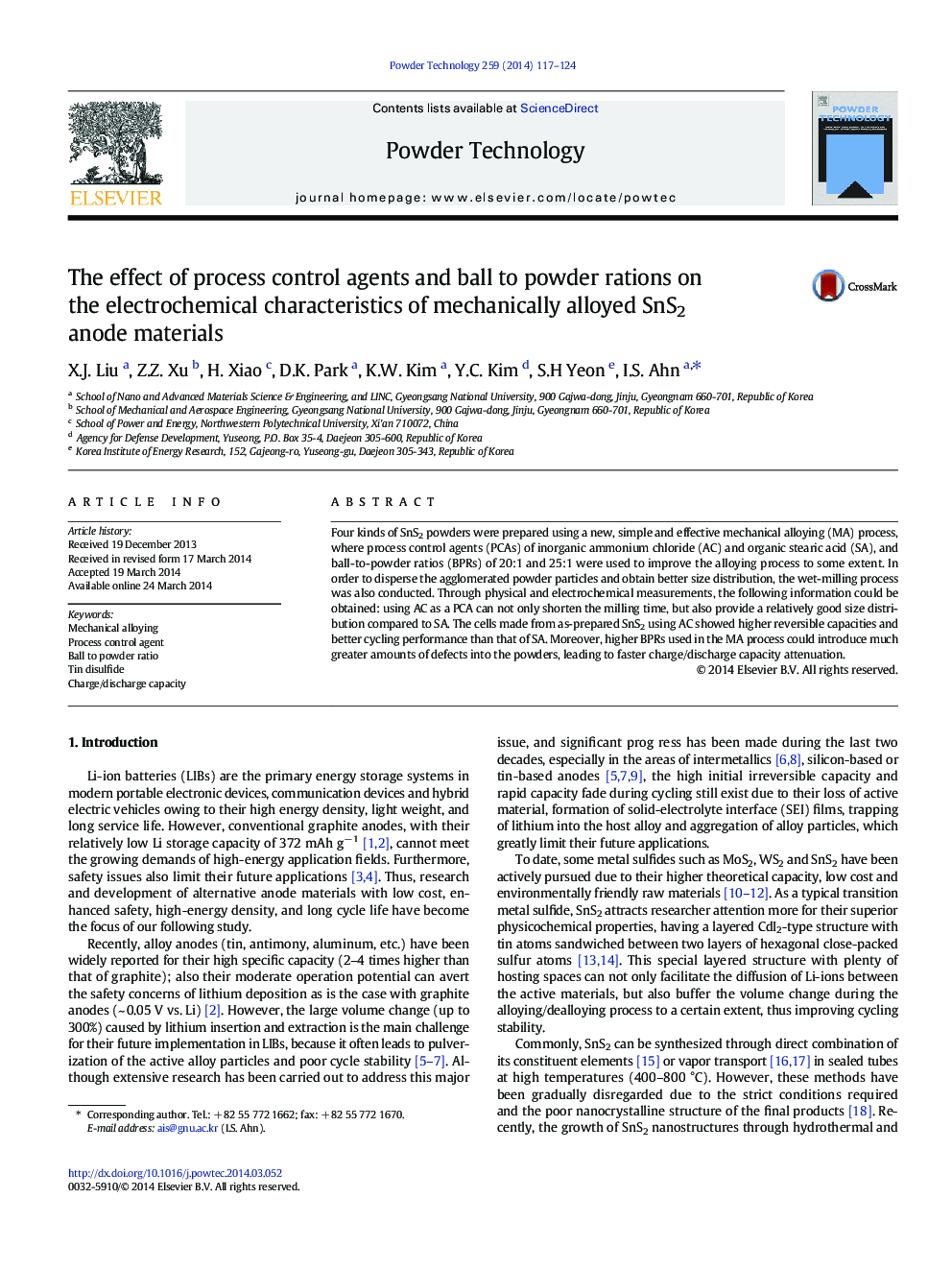| Article ID | Journal | Published Year | Pages | File Type |
|---|---|---|---|---|
| 236191 | Powder Technology | 2014 | 8 Pages |
•MA is successfully applied to synthesize fine SnS2 with different PCAs and BPRs.•Using AC can short milling time and provide a relative good size distribution.•The higher the BPR used, the faster the crystalline/amorphous transformation.•The higher the BPR used, the worse the crystallinity obtained.•Crystallinity has a major impact on the initial charge/discharge capacity.
Four kinds of SnS2 powders were prepared using a new, simple and effective mechanical alloying (MA) process, where process control agents (PCAs) of inorganic ammonium chloride (AC) and organic stearic acid (SA), and ball-to-powder ratios (BPRs) of 20:1 and 25:1 were used to improve the alloying process to some extent. In order to disperse the agglomerated powder particles and obtain better size distribution, the wet-milling process was also conducted. Through physical and electrochemical measurements, the following information could be obtained: using AC as a PCA can not only shorten the milling time, but also provide a relatively good size distribution compared to SA. The cells made from as-prepared SnS2 using AC showed higher reversible capacities and better cycling performance than that of SA. Moreover, higher BPRs used in the MA process could introduce much greater amounts of defects into the powders, leading to faster charge/discharge capacity attenuation.
Graphical abstractFigure optionsDownload full-size imageDownload as PowerPoint slide
